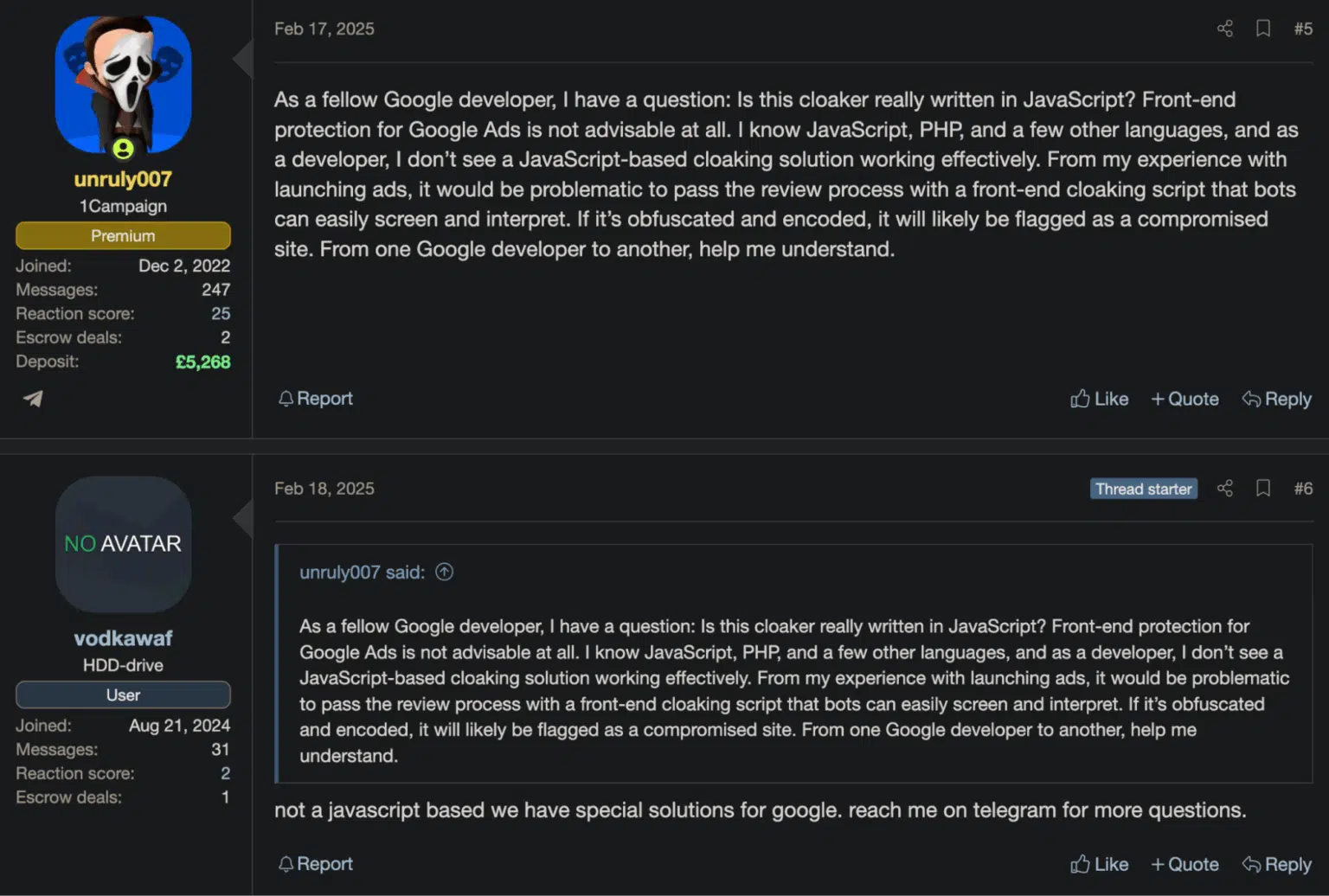Cloaking technology, once the domain of gray-area online marketers, has undergone a sophisticated evolution that now threatens the cybersecurity landscape.
In recent months, cybercriminals have begun leveraging AI-powered cloaking-as-a-service (CaaS) platforms to protect phishing pages, fraudulent online stores, and malware distribution sites from the scrutiny of security scanners and automated defenses.
Platforms such as Hoax Tech and JS Click Cloaker represent the forefront of this technological shift, offering tools that can dynamically determine whether a visitor is a potential victim or a security bot delivering malicious content only to the former while serving innocuous, “white page” content to the latter.
According to SlashNext Report, this dual-site approach allows malicious sites to persist online far longer, maximizing victim exposure and undermining traditional detection mechanisms.
Rapid Adoption of AI-Powered Cloaking Services
Cloaking itself is not a new tactic it has long been used by advertisers to circumvent platform policies.
What distinguishes the current trend is the integration of artificial intelligence and sophisticated scripting, enabling far more nuanced and adaptive traffic filtering.
For example, platforms like Hoax Tech utilize advanced JavaScript fingerprinting, collecting hundreds of data points from each visitor such as device characteristics, browser plugins, geolocation, and behavioral cues while employing machine learning models to distinguish real users from traffic analysis tools.

The proprietary AI engines, such as the Matchex system used by Hoax Tech, continuously learn from large datasets of web traffic to identify the subtle behavioral markers of crawlers and moderation systems, dynamically updating detection logic to bypass evolving security bots.
Similarly, JS Click Cloaker boasts machine-learning-powered filtering across more than 900 parameters per visit, enabling highly granular control over who sees what.
By analyzing everything from IP reputation and HTTP headers to user interaction patterns, these services make real-time decisions to either block, reroute, or allow access to the “black page” the true malicious payload.
Advertised both on cybercriminal forums and through legitimate marketing channels, these platforms have dramatically lowered the barrier to entry for deploying highly evasive attack infrastructure even for less technically skilled threat actors.

Evolving Countermeasures from Security Defenders
The rise of professionalized CaaS offerings has sparked a response from forward-looking security vendors and defenders.
Security companies now focus on dynamic, behavior-based analysis rather than relying solely on historical or static indicators.
For instance, sandboxed virtual browsers are employed to fully render suspicious pages and mimic genuine user behaviors, seeking to provoke the site into revealing its hidden, malicious functionality.
Other strategies involve multi-perspective scanning testing suspect URLs from various geolocations, devices, and network profiles to catch discrepancies in content delivery that signal cloaking in action.
Heuristic analysis of web content has also become essential; threat detection tools examine page code for signs of aggressive fingerprinting, dynamic content swapping, and the presence of tell-tale cloaking logic.
While these techniques increase the likelihood of pinpointing cloaked sites, the AI engines at the heart of modern CaaS platforms are constantly adapting, escalating what is effectively an arms race between attackers and defenders.
AI-driven cloaking technologies are reshaping the cybercriminal ecosystem by making phishing, fraud, and malware campaigns more resilient and harder to detect.
As these services become more accessible and sophisticated, security teams must adapt quickly, employing real-time behavioral inspection, differential scanning, and advanced heuristic models to reliably identify and neutralize cloaked threats on the modern web.
Find this Story Interesting! Follow us on Google News, LinkedIn, and X to Get More Instant updates